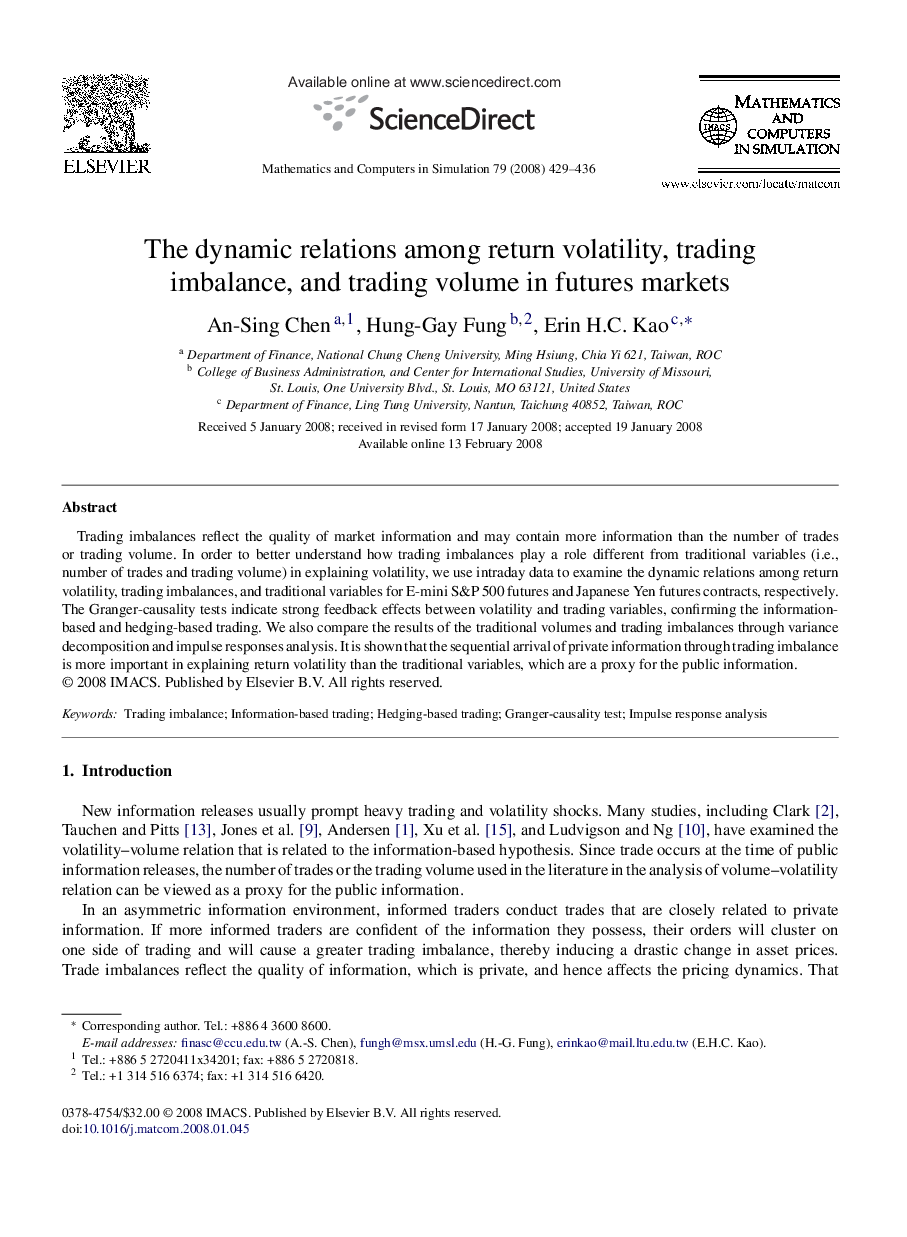| Article ID | Journal | Published Year | Pages | File Type |
|---|---|---|---|---|
| 1140229 | Mathematics and Computers in Simulation | 2008 | 8 Pages |
Trading imbalances reflect the quality of market information and may contain more information than the number of trades or trading volume. In order to better understand how trading imbalances play a role different from traditional variables (i.e., number of trades and trading volume) in explaining volatility, we use intraday data to examine the dynamic relations among return volatility, trading imbalances, and traditional variables for E-mini S&P 500 futures and Japanese Yen futures contracts, respectively. The Granger-causality tests indicate strong feedback effects between volatility and trading variables, confirming the information-based and hedging-based trading. We also compare the results of the traditional volumes and trading imbalances through variance decomposition and impulse responses analysis. It is shown that the sequential arrival of private information through trading imbalance is more important in explaining return volatility than the traditional variables, which are a proxy for the public information.
